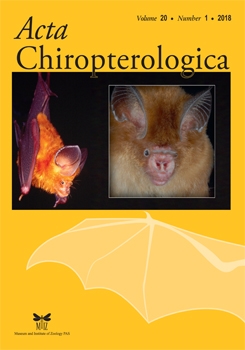Bats and their ectoparasites are excellent model organisms to assess the conservation status of protected areas because both groups are speciose, and bats can be particularly affected by land use changes. The majority of bat studies conducted in Panama are clustered in protected areas around the Isthmus of Panama, while protected areas outside the Isthmus have not been studied in depth or remain largely unexplored. Coiba National Park is located on the Pacific coast of the country and is the fourth largest national park in Panama. Despite its distinct isolation from the mainland and the periodic dry spells it has undergone during the last 25,000 years, Coiba National Park has highly preserved forests. We provide the first study that assesses the structure of the bat assemblage of Coiba National Park, describe echolocation calls of some of its aerial insectivorous species, and contribute the first species list of ectoparasitic bat flies (Diptera: Streblidae). Using mist nets and acoustic monitoring techniques, we identified 30 bat species from 904 captures and 751 recordings. Artibeus jamaicensis and Carollia perspicillata were the most abundant species captured, while Myotis nigricans, Saccopteryx leptura and Molossus bondae were the most frequently recorded aerial insectivores. Associated with the bats we also identified 22 species of streblid flies, all representing new records for Coiba National Park. The host specificity was 98.2%, a high value compared to studies in other areas of Latin America. In total, we found eight new bat species for Coiba National Park, increasing the species list to 39, making it, with a rather limited study effort, the National Park with the fourth highest bat species richness recorded in Panama. We reckon that such levels of richness are correlated with the highly preserved forests of Coiba National Park.
How to translate text using browser tools
1 June 2018
Bats and their Bat Flies: Community Composition and Host Specificity on a Pacific Island Archipelago
Sergio Estrada-Villegas,
Tanja K. Halczok,
Marco Tschapka,
Rachel A. Page,
Stefan D. Brändel,
Thomas Hiller
ACCESS THE FULL ARTICLE

Acta Chiropterologica
Vol. 20 • No. 1
June 2018
Vol. 20 • No. 1
June 2018
biodiversity monitoring
Central America
national parks
protected areas




